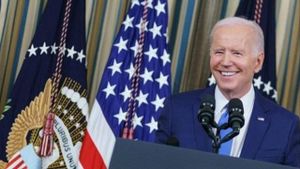Donald Trump’s return to the White House has set the stage for what many are anticipating to be another tumultuous four years, one defined by sweeping policy shifts and the potential for significant repercussions across various sectors of American society. With his decisive victory over Vice President Kamala Harris, Trump's allies are now busily preparing for what’s gearing up to be his second term, intensifying brewing tensions surrounding immigration policies and federal workforce dynamics.
Following his victory, Trump's administration is already drawing plans for the mass detention and deportation of immigrants, echoing his earlier promises made during his campaigning season. According to insiders, discussions among Trump’s circle have included prioritizing the deportation of undocumented immigrants who have committed crimes, revisiting the contentious topic of Dreamers, and potentially leveraging military resources for enforcement. Jason Miller, Trump’s senior advisor, has stated emphatically, “Trump’s day one priority is to reinstate his former administration’s border policies and reverse those of President Joe Biden.” This shift is expected to bring heightened tensions and new legal battles from immigrant rights groups who have been preparing for the worst since the campaign began.
At the heart of Trump’s immigration agenda are proposals for mass deportations and the establishment of immense detention camps, along with hiring thousands of new border agents. Legal experts and advocates, aware of the historical challenges posed by Trump’s earlier presidency, have noted their readiness for the impending legal conflicts. Kica Matos, president of the National Immigration Law Center, warned, “We should expect to see the devastation of immigrant communities all over the country,” projecting fears of large-scale family separations reminiscent of Trump’s previous term.
Trump’s plans also indicate intentions to revamp the federal government’s structure. His platform advocated redistributing government workers away from Washington D.C. and enacting sweeping cuts to federal agencies. This signals not only budgetary reductions but potentially significant upheaval for thousands of federal employees who may face layoffs or relocation. Those within the federal workforce are bracing for the possibility of losing their positions or being deployed to less desirable locations—all under Trump's plan for governmental efficiency.
Beyond the immediate ramifications for immigration and federal employees, Trump’s return could engender long-term shifts across multiple sectors, particularly with the anticipated appointment of individuals viewed as loyalists rather than experienced policymakers. Trump’s advisor team reportedly includes figures like Richard Grenell for Secretary of State and Marco Rubio for another key position. Reports indicating Trump’s possible selection of Robert F. Kennedy Jr. as the head of health and food safety have sparked alarm among public health advocates who fear he might undermine the current health infrastructure, especially considering Kennedy’s controversial positions on vaccines.
Meanwhile, Trump's allies are delving deep to vet potential candidates for various key positions. Susie Wiles, his campaign advisor, leads the pack for Chief of Staff, with several others being considered for pivotal roles within the Justice and Defense Departments. Observers note the stark difference from Trump’s previous term where team members experienced high turnover rates, creating chaos and confusion around policy implementation and governance. The Brookings Institution documented this where Trump had approximately 92% turnover of senior officials during his first four years, highlighting the instability often characteristic of his leadership.
Trump's impending phase is marked not only by challenges from federal employee unions and immigrant advocates but also by the abstract fears tied to his centralization of power and undermining of checks and balances. Election outcomes have led to discussions on the ramifications of Trump's authority and how his potential unilateral decisions might shape new legislation or sidestep it altogether.
Another aspect of concern is timing; the first few weeks and months of the new administration are likely to reveal Trump’s commitments to executing his agenda swiftly. Immigrant advocacy groups are already mobilizing to challenge policies as they are proposed and implement systems to protect vulnerable populations more effectively than they did during his first term.
Experts and analysts predict the immediate goals will likely resonate with Trump’s foundational campaign messages, including border security and immigration law enforcement following his time away from the presidency. With the possibility of achieving control over both chambers of Congress, Trump’s legislative aspirations could become much more attainable, foreshadowing an aggressive push for policies aligning with his core principles without much opposition.
While communities brace for the socio-political shifts promised by Trump’s firm stance on several issues, observers from both sides of the political spectrum spotlight the shift as inherently disruptive. This time around, the heightened organization and readiness from advocacy groups signify the lessons learned from Trump’s first term, leading to strategies aimed at immediate legal responses as his administration sets forth its agenda.
Clearly, the path forward under Trump’s leadership promises to be fraught with tension, raising concerns about the impact on families, federal employees, and the immigrant communities directly affected by new policies. With the second chapter of Trump’s presidency underway, Washington waits anxiously for the first moves from the incoming administration and the ripple effects these decisions will carry across the nation.



